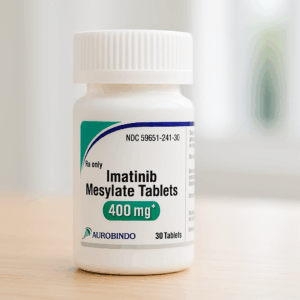Last Updated on May 9, 2025
Wegovy, Zepbound, Mounjaro, Ozempic, Rybelsus. Chances are you’re familiar with at least one of those weight loss drugs.
But it’s no secret that they’re not so affordable. You could easily spend thousands of dollars for those medications if insurance doesn’t cover them.
Fortunately, other weight loss drugs exist and they are much cheaper out of pocket. In this blog, we’re going to cover what these drugs and how much they will cost you.
1. Phentermine
Phentermine works as an appetite suppressant to jumpstart weight loss. It’s the least expensive drug on this list, usually costing between $25 and $50 per month out of pocket. Doctors usually prescribe it for short-term use.
There isn’t a manufacturer coupon for Phentermine, but you can still get it cheaper than the list price. The average price users pay using our Drug Discount Card is around $12. Download the card to save on Phentermine.
2. Qsymia
Qsymia is a combination of phentermine and topiramate, which works together to suppress appetite and enhance the feeling of fullness.
It’s not as affordable as Phentermine, but it’s still worth it to include in this list. For one, its list price is not as high (at least, compared to Ozempic or Wegovy). Uninsured patients can expect to pay around $200 out of pocket.
Fortunately, the manufacturer offers programs to help bring the cost down.
With the Qsymia Savings Card, patients may pay as little as $70, depending on your type of coverage. Sign up on the website to get the card, if you’re eligible for benefits.

3. Contrave
Contrave combines two medications: bupropion, which is an antidepressant, and naltrexone, which is typically used for addiction treatment. Together, they work to regulate hunger and reduce cravings.
Out-of-pocket, you can expect to pay between $260 and $600. However, the manufacturer offers a few programs to help with the cost of Contrave:
- Patients on federal insurance (such as Medicare, Tricare, etc) are eligible for the CurXAccess Program. Depending on insurance, they can pay $99 or lower.
- The Contrave Coupon Savings Card is available for insured patients. Patients may pay anywhere from $20 to $199, so enroll on the website to confirm the cost.

How to Afford Expensive Weight Loss Drugs
If you still prefer expensive weight loss drugs, check out these programs to help you with the cost.
- Wegovy Savings Card: Eligible commercially insured patients may pay as little as $0 per 28-day supply.
- Zepbound Savings Card: Eligible commercially insured patients pay $25 per monthly supply.
- Mounjaro Savings Card: Eligible commercially insured patients may pay as little as $25 for a 1-month or 3-month prescription.
- Rybelsus Savings Card: Eligible commercially insured patients may pay as little as $10 per 30-day prescription.
- Ozempic Savings Card: Eligible commercially insured patients may pay no more than $25 per 30-day prescription.
Find Low Cost Weight Loss Drugs Today
Wegovy, Ozempic, and Mounjaro come with steep price tags. Fortunately, Phentermine, Qsymia, and Contrave can still support your weight loss journey at a lower cost.
Take advantage of these resources and talk to your healthcare provider about which medications might be the best fit for your health and financial needs. Always explore manufacturer websites for updated savings information and keep an eye on additional assistance programs that may help reduce costs further.
Find more information on NeedyMeds for weight loss medications and savings resources, and start your journey to a healthier, more affordable lifestyle today!





